Click on images to enlarge
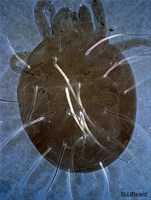
Fig. 1. Panonychus citri adult female (non-type) - dorsal habitus.
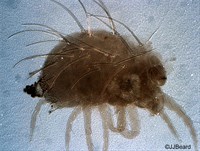
Fig. 2. Panonychus citri adult female (non-type) - lateral habitus.
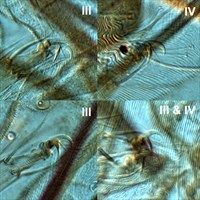
Fig. 3. Panonychus citri adult female (non-type) - detail of claws III and IV.
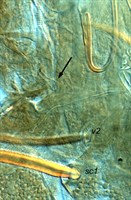
Fig. 4. Panonychus citri adult female (non-type) - detail of peritreme (arrow indicates tip).
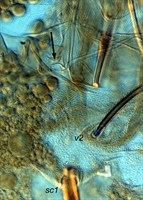
Fig. 5. Panonychus citri adult female (non-type) - detail of peritreme (arrow indicates tip).
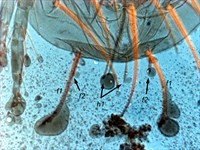
Fig. 6. Panonychus citri adult female (non-type) - detail of length of setae f1, f2 and h1 (only f2, h1 in focus).
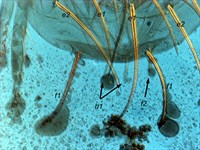
Fig. 7. Panonychus citri adult female (non-type) - detail of length of setae f1, f2 and h1 (only f1 in focus).
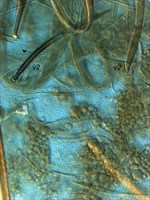
Fig. 8. Panonychus citri adult female (non-type) - detail of pattern on prodorsal cuticle.
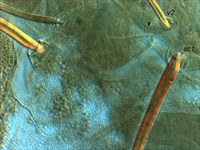
Fig. 9. Panonychus citri adult female (non-type) - detail of pattern on prodorsal cuticle.
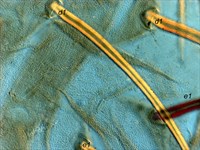
Fig. 10. Panonychus citri adult female (non-type) - detail of pattern on dorsal cuticle.
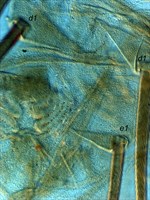
Fig. 11. Panonychus citri adult female (non-type) - detail of pattern on dorsal cuticle.
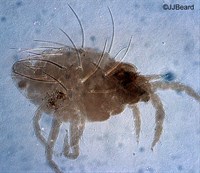
Fig. 12. Panonychus citri adult male (non-type) - lateral habitus.
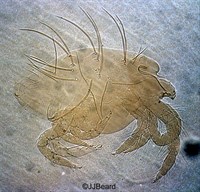
Fig. 13. Panonychus citri adult male (non-type) - lateral habitus.

Fig. 14. Panonychus citri adult male (non-type) - detail of claws III and IV.
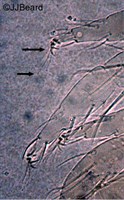
Fig. 15. Panonychus citri adult male (non-type) - detail of empodia I (arrows indicate the long tenent hairs).
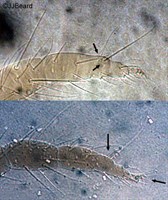
Fig. 16. Panonychus citri adult male (non-type) - detail of tarsus I (arrows indicate adjacent duplex setae, and claw).

Fig. 17. Panonychus citri adult male (non-type) - detail of leg IV (arrow indicates the claw, and long tenent hairs).
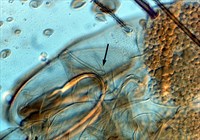
Fig. 18. Panonychus citri adult male (non-type) - detail of peritreme (arrow indicates tip).

Fig. 19. Panonychus citri adult male (non-type; NZ) - detail of aedeagus.

Fig. 20. Panonychus citri adult male (non-type; Australia) - detail of aedeagus.
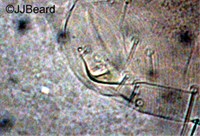
Fig. 21. Panonychus citri adult male (non-type; Australia) - detail of aedeagus.
Material examined
non-types
Taxonomy
Subfamily Tetranychinae
Tribe Tetranychini
Common Name
Citrus red mite
Distribution
+Australia, Albania, Argentina, Bermuda, Brazil, Bulgaria, CIS, Canada, Canary Islands, Chile, China, Colombia, Cook Islands, Costa Rica, Cuba, Finland, France, Greece, Hainan Island, Hawaii, Honduras, Hong Kong, Hungary, India, Indonesia, Iran, Italy, Japan, Korea, Lebanon, Libya, Malaysia, Mexico, Morocco, Mozambique, Nepal, New Zealand, Pakistan, Panama, Papua New Guniea, Peru, Philippines, Reunion, South Africa, Spain, Sri Lanka, Taiwan, Thailand, The Netherlands, Tunisia, Turkey, UK, *USA, Venezuela, Vietnam, Yugoslavia
Taxonomy Changes
Tetranychus citri McGregor 1916
Paratetranychus citri (McGregor) McGregor 1919
Metatetranychus citri (McGregor) Reck 1941
Panonychus citri (McGregor) Ehara 1956
Tetranychus mytilaspidis Banks 1900
Paratetranychus mytilaspidis (Banks) Banks 1915, syonymy Pritchard & Baker 1955
Diagnosis
Female (Figs 1, 2)
- empodia I-IV = short, strongly curved claw; with long tenent hairs on lateral "claws", over twice as long as claw (Fig. 3)
- pregenital striae entirely longitudinal
- peritreme ending in simple, expanded bulb (Figs 4, 5)
- dorsal setae h1 and f2 are subequal in length (Figs 6, 7)
- dorsal setae f1 approx. twice (or more) length of both h1 & f2 (Figs 6, 7)
- dorsal striae on opisthosoma transverse (Fig. 10)
- tarsus I with the sockets of three tactile setae and one solenidion proximal to, and two tactile setae overlapping, the socket of the proximal duplex seta (duplex pairs adjacent to each other, see Fig. 16)
- tarsus II with the sockets of two tactile setae and one solenidion proximal to, and two tactile setae overlapping, the socket of the duplex seta
- lobes on dorsal striae tiny, narrow, conical, closely spaced, making cuticle appear spiculate (Figs 8-11)
- lobes on ventral striae broad, rounded
- dorsal setae long, pink, finely barbed, arising from strong tubercles (Figs 1, 2, 10, 11)
- leg chaetotaxy (from Meyer 1974):
- femora 8, 6, 3, 1
- genua 5, 5, 3, 3
- tibiae 8(1), 5, 5, 5
- tarsi 17(3), 14(2), 10(1), 10(1)
Male (Figs 12, 13) as per female plus:
- peritreme ending in a simple oblong expanded bulb or short hook like a golf-club (Fig. 18)
- aedeagus dorsally directed, elongate, slightly sinuous, extremely finely tapering towards tip (Figs 19-21)
Hosts
> 80 recorded species of host plant, many Rutaceae, including: Acacia sp. (Mimosaceae), Artocarpus heterophyllus (Moraceae), Averrhoa carambola (Oxalidaceae), Azadirachta indica (Meliaceae), Camellia sinensis (Theaceae), Carica papaya (Caricaceae), Carya illinoensis (Juglandaceae), Citrofortunella mitis (Rutaceae), 11 Citrus spp. including *Citrus limon (Rutaceae), Clausena anisata (Rutaceae), Cocos nucifera (Arecaceae), Cotoneaster microphylla (Rosaceae), Cucurbita spp. (Cucurbitaceae), Fagara capensis (Rutaceae), Ficus spp. (Moraceae), Fortunella macanta (Rutaceae), Fragaria sp. (Rosaceae), Ilex crenata (Aquifoliaceae), Malus domestica (Rosaceae), Morus spp. (Moraceae), Murraya panniculata (Rutaceae), Osmanthus spp. (Oleaceae), Persea americana (Lauraceae), Prunus spp., Pyrus spp., Rosa mulitiflora, Rubus buergeri (Rosaceae), Sasa senanensis (Poaceae), Trachycarpus excelsa (Arecaceae), Vitis vinifera (Vitaceae)
Similar Taxa
Biology
Panonychus citri was first recorded in Australia in Queensland (Anon 1958/59); however, Gibson (1968) points out that a re-examination of the specimens in question revealed that the mites were not P. citri. So, the first accurate record of P. citri in Australia is that of Gibson (1968) who recorded it from suburban Sydney, New South Wales, where it was collected on leaves and fruit of Eureka lemon trees.
When large populations build up on primary hosts, nearby secondary hosts may also become infested. While active stages of the mites are found on either surface of the leaves and on green twigs and fruit, eggs are usually laid on the upper surfaces of leaves. Three types of feeding damage have been recorded for P. citri: 1. when mites are abundant, scratch like marks on the upper surface of the leaves give the leaves a pale greyish appearance; 2. the leaves drop leaving the petiole attached to the green twig; 3. leaves turn brown and die, giving the tree the appearance that it has fire damage.
This species appears to do well in drier climates. In the USA, citrus red mite was originally confined to the coastal areas, but soon spread to the dry inland citrus districts of California in the late 1930s.
References
Banks, N. (1900) The red spiders of the United States (Tetranychus and Stigmaeus). U.S. Dep. Agric. Div. Entomol. Tech. Ser. 8: 65-77
Banks, N. (1915) The Acarina or mites. U.S. Dep. Agric. Rep. 108: 153pp.
+Davis, J.J. (1968c) Studies of Queensland Tetranychidae. 5. Records of the genus Panonychus from Queensland, with a note on the occurence of Panonychus citri (McGregor) in New Guinea. Queensland Journal of Agricultural and Animal Sciences 25: 73-75
Ehara, S. (1956) Tetranychoid mites of mulberry in Japan. J. Fac. Sci. Hokkaido Univ. (Ser. 6) Zool. 12: 499-510
+Gibson, F.A. (1968) Citrus red mite, Panonychus citri (McGregor) (Tetranychidae: Acari), recorded from New South Wales. Australian Journal of Science 30: 273
*McGregor, E.A. (1916) The citrus mite named and described for the first time. Annals of the Entomological Society of America 9: 284-290
McGregor, E.A. (1919) The red spiders of America and a few European species likely to be introduced. Proceedings of the United States National Museum 56: 641-679
Pritchard, A.E. and Baker, E.W. (1955) A revision of the spider mite family Tetranychidae. Pacific Coast Entomology Society Memoirs 2: 1-472
Reck, G.F. (1941) Kustanovleniju vilovoj rinadleznosti pautinnogo klesca, vredjascego v Gruzii citrusovym. Soob. Akad. Nauk. Gruz. S.S.R. 2: 831-835
Notes
Separated from P. ulmi by having dorsal setae h1 and f2 subequal in length, both being about one third the length of setae f1 (Meyer 1974), and eggs of P. citri have the support silk strands running from the dorsal stipe to the leaf surface.
This species was first recorded in Australia near Sydney, New South Wales (Gibson 1968), and was then recorded in Queensland; however Davis (1968) showed that the Queensland specimens were actually P. elongatus.
Copyright © 2018. All rights reserved.